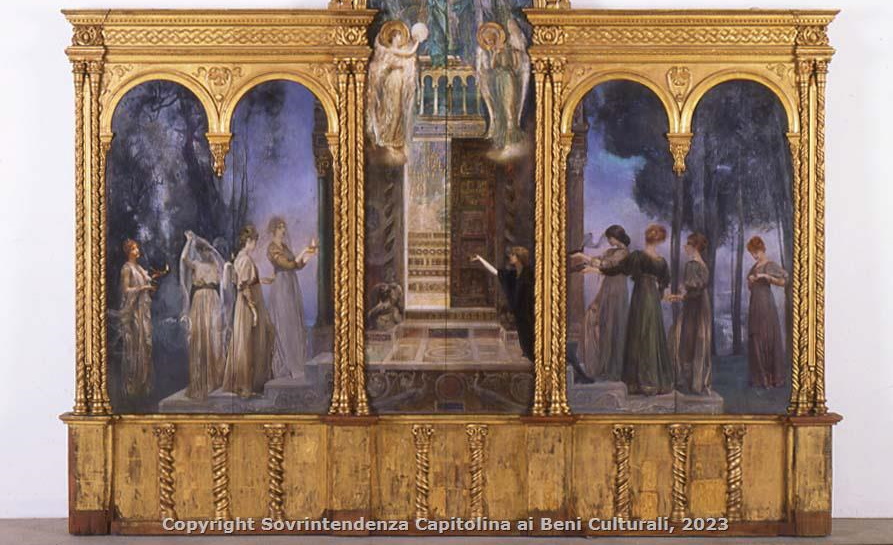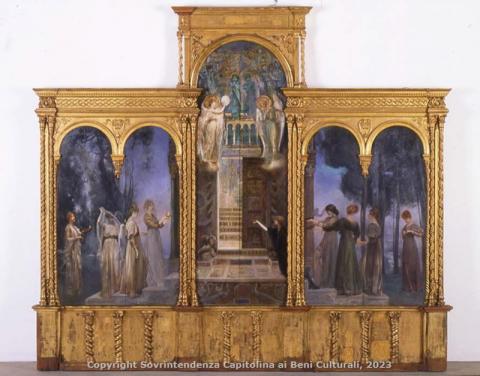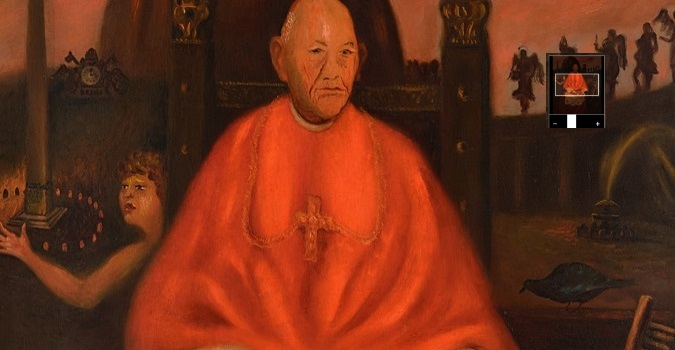The Artwork of the Month - March 2023
Giulio Aristide Sartorio
(Roma 1860-1932)
Le vergini savie e le vergini stolte, 1890-91
Oil on wood panel, cm 188 x 205
Inv. AM 2849

Inspired by the episode of the same name from the Gospel of Matthew (chapter 25, verses 1-13), the triptych was commissioned in 1890 by Count Gegé Primoli as a wedding gift for his bride-to-be; however, the nobleman never collected the painting due to the failure of the marriage, which is why the payment also remained outstanding.
The two groups of wise virgins (on the left) and foolish virgins (on the right) - one waiting with lamps burning, the other distracted and with lamps extinguished, respectively paired with olive trees (fruit-bearing trees) and pine trees (fruitless trees) - move towards the centre of the scene, where a half-open door leads to the groom's luminous abode, surmounted by winged angels.
From the artist's letters preserved in the Primoli Foundation Archive, it is possible to deduce the complex gestation of the painting and the wealth of iconographic sources. While drawing inspiration from the Gospel, which symbolically alludes to the coming of Christ at the end of time, Sartorio emphasised the theme of female virtues, sketching the profile of the ideal bride, modest, faithful and prudent, a motif dear to Pre-Raphaelite culture. The triptych is inspired not only by 14th-15th century "primitivist" models (with precise citations of Ghiberti's Gates of Paradise and Pisanello's frescoes in San Fermo in Verona), but also by Giuseppe Cellini's decorations in the Galleria Sciarra in Rome, on a similar theme, completed in 1888. In addition, for the execution of the figures, Sartorio used photographic portraits of several Roman noblewomen of the time, including Maria D'Annunzio Gallese, the marquises Theodoli and Sanfelice and the princess Odescalchi.
The work reveals an early knowledge of English Pre-Raphaelism - probably due to his friend D'Annunzio, to reproductions of works by Rossetti and Burne-Jones and to his frequentation of English artists in Rome - later refined by Sartorio thanks to his trip to London, Manchester and Liverpool in 1893.
Presented at the 1899 Venice Biennale, the painting was bought in 1939 by the Governorate of Rome.
Return to the section > The Galleria d'Arte Moderna artwork of the month







































